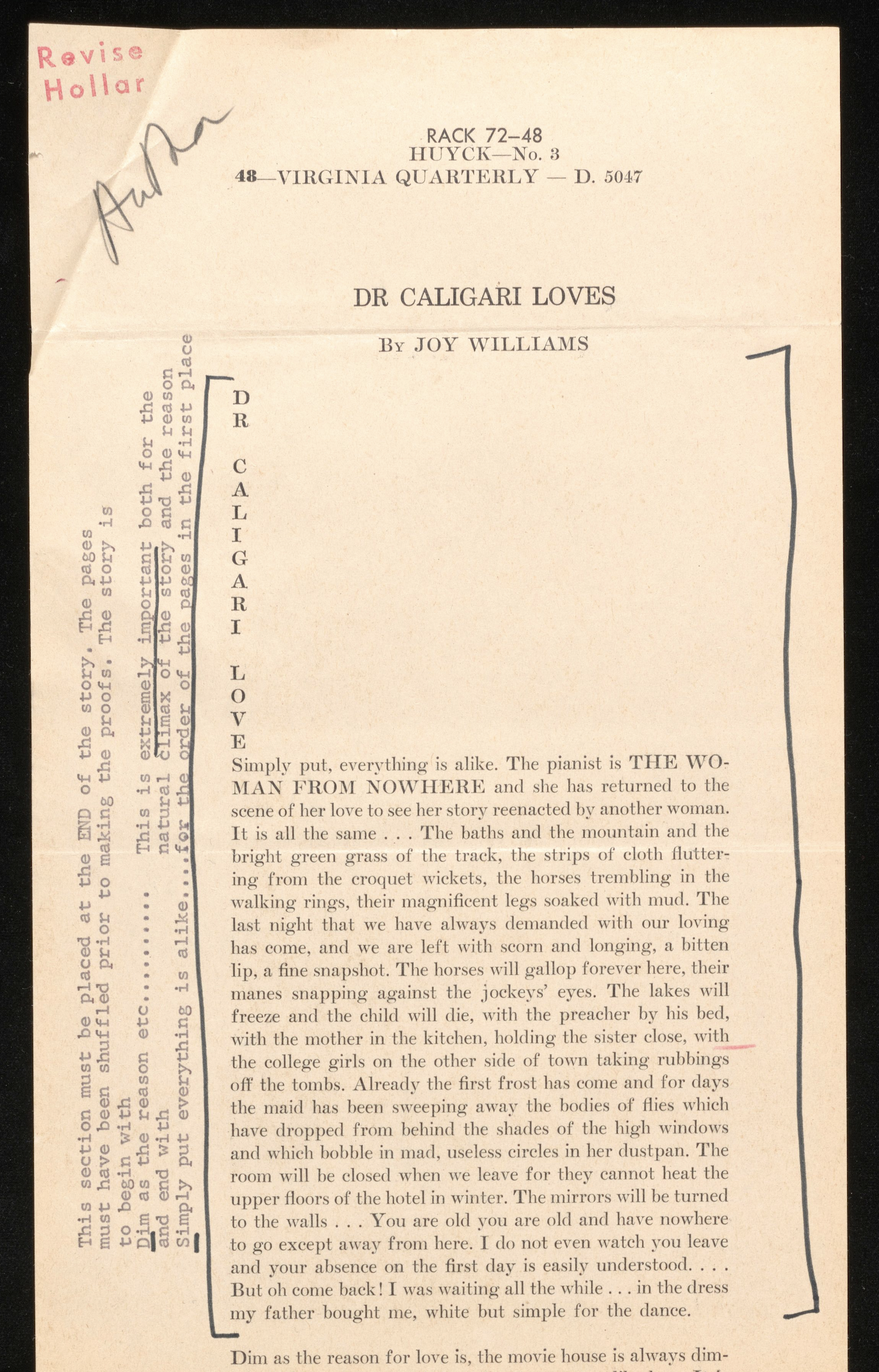
Proof of Joy Williams' "Dr. Caligari Loves," 1969

Published in the Summer of 1969, Joy Williams’s “Dr. Caligari Loves” is early evidence of the restless originality that would make her an icon of American fiction and a master among masters of the short-story form. Using an acrostic-like architecture, the story twines together themes that are like misshapen variations of more comfortable clichés—love and death, for instance, show up as a mutual loneliness and the fear of aging—all dipped in her singular, briny sense of humor. The story, which remains uncollected, was one of four recipients of VQR’s Emily Clark Balch prize for fiction that year. Williams was only twenty-five at the time, but charging hard out of the gate: Her first novel, State of Grace, would be published just four years later and would be a finalist for the National Book Award for fiction. Meanwhile, judging by what she’d submitted for her contributor’s bio for the issue, she was already deep into the subject of what would become a reported story for Esquire magazine, “working on a U.S. Navy project at a shark research laboratory on Siesta Key, Florida.”
